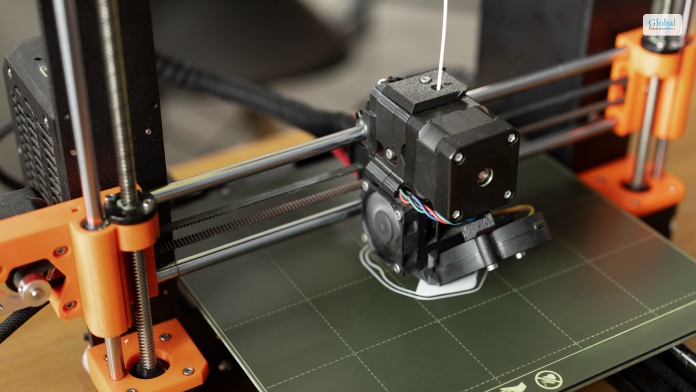What Is A Mass Market Paperback? Explained In 2023?

The mass market paperback is a small, inexpensive, and non-illustrated bookbinding format that you can use to publish your book in some non-traditional bookbinding format that you can use as per the situation’s needs. You need to plan things as per the current needs for publishing your brand new book.
You can sell these books in non-traditional book-selling locations like drug stores, supermarkets, airports, and some traditional book stores. Many of you have asked me what is mass market paperback in the past too. I have answered this question. But now, you must know what its benefits are?
Mass Market Paperback Meaning

A mass market paperback is just a particular edition of a book that is mass-produced to make the book affordable to a larger audience. Basically, you will find that the book comes with relatively small and thin papers, covers, binding, and design. You can check that the book comes with pages that are of lower quality than standard books.
Most of the mass market paperback books are made for the ones that are bestsellers in the market due to high demand. This is created for wide distribution in the marketplace. You will find mass-market paperbacks mostly at supermarkets, airports, drug stores, or even many online eCommerce platforms. So, when people are going on a vacation, they can get an easy diversion with the book.
According to Masterclass.com,
“Bestsellers are often made available as mass market paperbacks, and they are easily found in grocery stores, newsstands, airports, railway stations, and used bookstores. The low-quality paper helps keep them cheap.”
This is different from a simple paperback (trade paperback) which comes with better-quality covers, pages, and print. Furthermore, both the mass-market paperback and trade paperback are different from hardcover books, where, as the name suggests, the cover is made of hard material so as to keep the book safer.
Mass Market Paperback Characteristics

There are some characteristics of the mass market paperback that makes it different from other types of books like hardcovers and trade paperbacks. Here are the major characteristics of mass market paperbacks:
1. Consist Of A Barcode
Any mass market paperback edition comes with a barcode named universal product code. This is not always available with trade paperbacks and hardcovers, as they mostly come with a Bookland EAN (European article number) code.
2. No Common Genres
There are no common genres for mass market paperbacks. However, in most cases, mass-market paperbacks mostly come in fiction, young-adult fiction, classics, mysteries, true crime, thrillers, and popular history. Apart from that, books by bestselling authors are also available in mass market paperback.
3. Can Be Stripped
The book covers of mass market paperbacks are strippable and can be removed from the book and sent back to the distributor or publisher for credit. The publisher then sends the book for recycling or pupping.
4. No Extra Updates
One of the limitations of mass-market paperbacks is that since it is created at a lower price for the mass market, there is no extra information provided with the update of the book. Publishers mostly release updated editions of books in paperback format.
Benefits Of Mass Market Paper Back

After knowing the answer to the question of what is mass market paperback, you must know its benefits that can help you get the right solution to numerous questions that are cropping up in your mind. Let’s find out its services correctly.
1. Price Of This Paperback
The price of this paperback of the mass market paperback is relatively low compared to traditional paperback copies. Readers are more willing to provide the young and new authors the chance, especially if they have a limited budget.
The mass market paperback is no longer a big question to those who require a book to read for their own need. What is mass market paperback I think will no longer a significant doubt for you to understand? You can get the books at an affordable price that can help you to continue your studies well.
2. Format
You can cut around a paperback easily and can carry it with you wherever you want. What is mass market paperback is not a big question to ask; instead, how portable is it is a matter of concern. You can carry the paperback with you wherever you want to.
The best thing about this mass market paperback is you can carry them and use them wherever you want. The most astonishing fact here is it is highly portable. You can have it whenever or wherever you want. Think actively in this regard; the better outcome you can derive from it.
3. Quality
MMP has the storytelling quality as the hardcovers. You can use the hardcovers to keep your book safe and protected all the time. The hardcovers will prevent the damage of the books from the mites and other paper-cutting elements. What is mass market paperback is no longer a confusion?
You can use the cover and the backing of this MMS for a longer duration of your life. It will reduce the scope of damage of the book from the mites and the rodents to a great extent. Proper planning can help you to get things done in the correct order at the right time.
4. Audience
The MMP is available widely all over the globe. Audiences like to purchase these types of book covers compared to that of the very costly hardcover. You will get the books cheaply and at an affordable rate from the drug stores, Walmart, and grocery shops. What is mass market paperback is no longer a doubt?
The MMP is in high demand in the market nowadays. It can help you to get things done as per the needs of the situation. The first printing of the hardcover book costs around 400000k -600000k. On the other hand, the MMP paperback will cost you around 500K. The lower price of the MMP makes the book available at an affordable rate.
5. Potential
If you are a potential good writer and you possess the knowledge to write quality writeups, then MMP can provide you a better opportunity to earn more. You can get a better royalty in MMP than that of the hardcover books you launch in the market.
The earning potential is enormous, but you need to know the ways to publish your book online. You cannot ignore the fact that we live in a digital age, and the requirement of the MMP will be in prime demand. The more accurate you are in your findings, the better scope you will get to make money from this book model or the cover.
6. Production
You can seek the help of the press to publish your book, for that you have to pay 50% extra production charge compared to that of the original cost. What is mass market paperback is no longer a big question?
Instead, how much money you can save from its production is a billion-dollar question. You need to plan things accordingly as per your needs from where you can get the maximum returns for your hard work. Here, proper planning holds the key. It can help you achieve your objectives in a better manner at the right point in time.
7. Print Run
Publishers often like to make the publishing using the MMP compared to that of the hardcover. The reason behind it is cheaper compared to that of the hardcover print. They are willing to take the risk to publish their book using the MMP. The reason behind it is they will lose less if they apply this method. It is one of the most innovative means to publish your book
Here the question is not what is mass market paperback; instead, the question is how much money it can save for you if your book does not get the required hit. You must take care of these facts while you are willing to publish your book in the market. Selection of the platform can help you to achieve your goals effectively.
Conclusion
Hence, whenever you are willing to publish your book using the MMP, you need to take care of these facts in advance. What is a mass market paperback? It is not a big question. Instead, how it can help you to earn billions from your creative writing work is a billion-dollar question that you must address from your end. Proper planning here holds the key. It will help you to achieve your business goals effectively. Think actively in this regard, the better outcome you can derive from your business.
Read Also:













